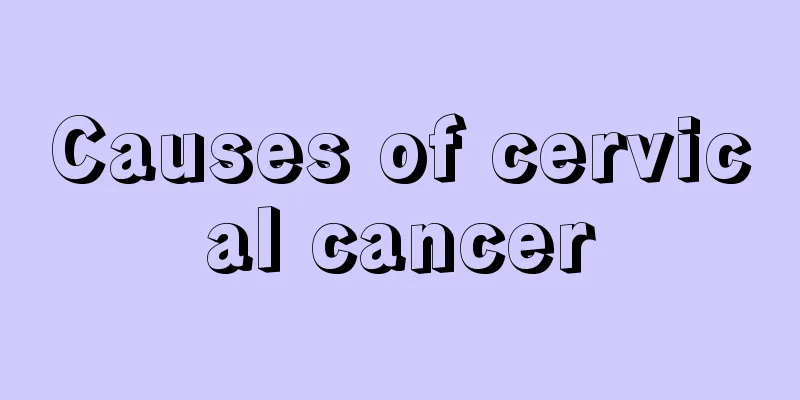Pain in one thigh

|
There are many nerves distributed in the human body, and many times the nerves will experience unexplained pain. Some people experience pain in the groin of one side of their thigh. In fact, there are many nerves distributed in the groin, such as the sciatic nerve. In fact, many reasons can cause sciatic nerve pain, so it is relatively difficult to find the cause of the pain in the groin at once. Next, I will introduce to you several causes of thigh pain, let’s check them one by one. Sciatica is a syndrome characterized by pain along the sciatic nerve pathway and distribution area. The vast majority of sciatica cases are secondary to lesions in the local sciatic nerve and surrounding structures that cause stimulation, compression and damage to the sciatic nerve, which is called secondary sciatica; a few are primary, namely sciatica. Etiology The causes are varied. The sciatica in the vast majority of patients is secondary to the stimulation, compression and damage to the sciatic nerve caused by lesions in the local sciatic nerve and surrounding structures, which is called secondary sciatica; a few are primary, namely sciatica. Clinical manifestations 1. General symptoms (1) The pain is mainly limited to the sciatic nerve distribution area, the posterior thigh, the posterior and lateral calf, and the foot. Patients with severe pain may adopt a unique posture: bending their waist, bending their knees, and standing on their toes. If the lesion is located at the nerve root, the pain will worsen when the pressure in the spinal canal increases (coughing, exerting force). (2) The degree of muscle weakness can vary greatly depending on the cause, location of the lesion, and the extent of the damage. The muscles innervated by the sciatic nerve may be completely or partially weak or paralyzed. (3) There may or may not be tenderness over the sciatic nerve trunk at the sciatic notch. (4) There is a sciatic nerve traction sign, positive Lasegue sign and its equivalent sign. The presence of this sign is often parallel to the severity of pain. This symptom may disappear after local anesthesia of the sciatic nerve root or nerve trunk. (5) The Achilles tendon reflex decreases or disappears, and the knee reflex may increase due to stimulation. (6) There may be a decrease or disappearance of various sensations in the area innervated by the sciatic nerve, including a decrease in vibration sensation at the lateral ankle, or there may be very mild sensory impairment. 2. Sciatica is often accompanied by various types of infections and systemic diseases, such as upper respiratory tract infections. Because the sciatic nerve is relatively superficial, sciatica is prone to occur when exposed to moisture or cold. When sciatica occurs due to systemic diseases, attention should be paid to the presence of complications such as collagen disease and diabetes. Most cases of sciatica are unilateral and not accompanied by waist or back pain. The pain is generally continuous but can also be paroxysmal. Symptoms worsen when spinal canal pressure increases and can also radiate along the sciatic nerve. There is obvious tenderness in the sciatic nerve trunk and gastrocnemius tenderness. The pain and muscle weakness are often not parallel. The pain is generally severe, while the muscle weakness is often not obvious. In the acute phase, it is difficult to judge motor function due to pain. Foot drop and atrophy of the gastrocnemius and tibialis anterior muscles may be detected. The Achilles tendon reflex is reduced or absent, but the Achilles tendon reflex may also be normal. The knee reflex is normal, and superficial sensory impairment is obvious. 3. Secondary sciatica (1) Lumbar disc herniation is the most common cause of sciatica, which often occurs at L4-5 and L5-S1. About 1/3 of cases have a history of acute lumbar trauma. Most patients are between 20 and 40 years old. The clinical characteristics are low back pain for several weeks or months, followed by sciatica in one lower limb. In addition to the general symptoms of sciatica, physical examination also showed tension in the back muscles, limited lumbar movement, scoliosis, and tenderness of the spinous processes at the affected area. (2) Lumbar osteoarthritis is more common in people over 40 years old. It has a subacute to chronic onset and is often accompanied by a history of long-term low back pain. It is difficult to stand up after sitting for a long time, or to sit down after standing for a long time. Clinically, it can manifest as sciatica on one or both sides and symptoms in the lower back. (3) Congenital malformations of the lumbar sacral spine include lumbar sacralization, sacral lumbarization, and occult spina bifida. In addition to sciatica, the latter often presents with a history of enuresis. Physical examination often reveals foot deformities and abnormalities of the lumbar skin, such as a small depression behind the anus and a small hemangioma on the midline of the sacrum. This often objectively and accurately indicates the area where the vertebral lamina has not healed. (4) Sacroiliitis is commonly caused by rheumatoid or tuberculous lesions. When there is exudation and destruction of the joint capsule, it stimulates the L4-5 nerve trunks, and some patients may have symptoms of sciatica. |
<<: Which department should I go to for facial pain
>>: Causes of Neck and Back Pain
Recommend
What contains the most vitamin A?
We know that there are many substances that maint...
Is there any hope for colon cancer invading the bladder?
There is still hope for treatment of colorectal c...
What are the symptoms of temporomandibular joint disorder
Temporomandibular joint disease is a common disea...
How long can you live if bladder cancer spreads
Bladder cancer is one of the most common tumors i...
How to remove black stains on white soles
White leather shoes are quite versatile and they ...
How to care for cardiovascular stenosis
Cardiovascular stenosis is generally a disease ca...
Early diagnosis method of cervical cancer How to treat early cervical cancer
In developed countries, the incidence of cervical...
What causes atrial premature beats
In clinical practice, premature beats are general...
What are the proven Chinese medicine prescriptions for treating cervical cancer?
In the treatment of cervical cancer, some Chinese...
Snake skin is delicious
I don't know if you have ever eaten snake mea...
Are kidney cysts serious? What kind of disease is renal cyst?
Renal cyst is a type of kidney disease and a comm...
What is small cell lung cancer? A malignant tumor
Small cell lung cancer is a malignant tumor cause...
Tips for peeling large amounts of garlic quickly
Peeling garlic is a technical job. Garlic is the ...
How to kill cuttlefish
Cuttlefish is a very popular seafood. It tastes d...
Which hospital is good at treating pancreatic cancer
Pancreatic cancer is a highly malignant digestive...









